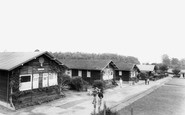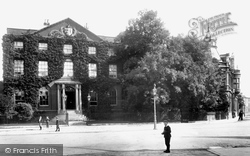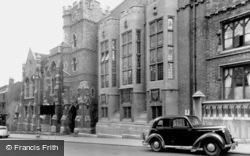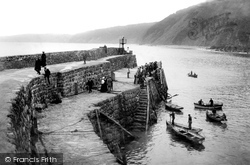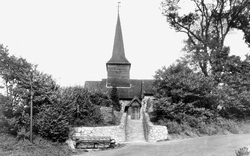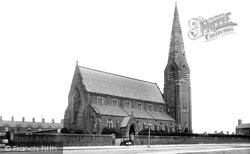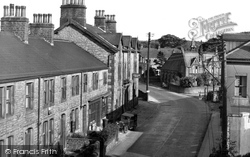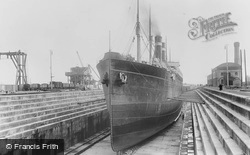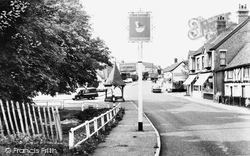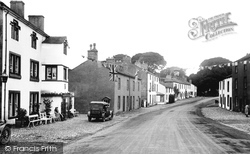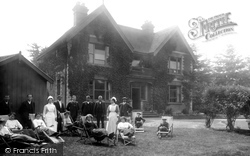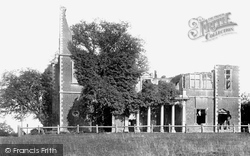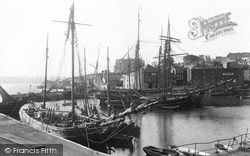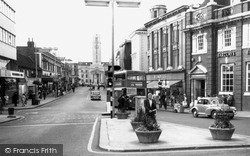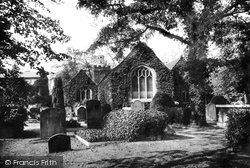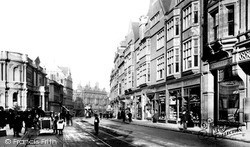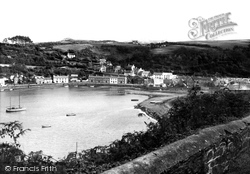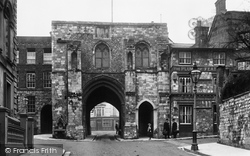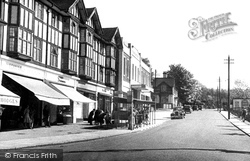Places
4 places found.
Those places high-lighted have photos. All locations may have maps, books and memories.
Photos
6 photos found. Showing results 701 to 6.
Maps
65 maps found.
Books
1 books found. Showing results 841 to 1.
Memories
4,591 memories found. Showing results 351 to 360.
6th Northwood Scouts Go Hostelling
I remember staying at the youth hostel in Greens Norton with the patrol leaders of the 6th Northwood Scout Group. I was an ASL (Assistant Scout Leader) with the troop for several years and as I had always ...Read more
A memory of Greens Norton in 1980 by
Trebanog
My grandparents, Henry and Ida Gladys Ward, came to Trebanog with their two daughters during the recession in the late 1920s to work in the mines. He had a brother, William, who worked as a butcher in Porth. I was hoping if someone remembers the time they spent there. Regards M Denney
A memory of Trebanog in 1920 by
The Keelings 1940 Evacuees
My sister, Joy, elder brother, Richard and myself, John Keeling, were evacuated to Llanharan in June 1940. After a short time Richard and myself were placed with a lovely old lady at 12 Seymour Avenue, Mrs Surridge. I ...Read more
A memory of Llanharan in 1940 by
Newcastle University
I attended the University from 1970 - 1973 studying Surveying and Mathematics with Messrs Carmody and Newton. I lived in Havelock Hall for two years, and was involved with the JRC committee that ran the social side ...Read more
A memory of Newcastle upon Tyne in 1970 by
Ratfyn Power Station
In the 1950s I was in the Royal Engineers and came over from Germany to our school of military engineering at Chatham where we did a course in electrical power stations. We were then posted to Bulford barracks, and did our ...Read more
A memory of Bulford in 1954 by
Dunsmore People And Happenings Remembered
PREFACE TO THE SECOND EDITION In 1995, when the first edition of this history was published, it seemed incredibly optimistic to have had three hundred copies printed for a market which ...Read more
A memory of Dunsmore by
Chickenley Hall
Hello. My father lived at Chickenley Hall in the 1940s as he was adopted and brought to the home by the Armitage family. He eventually came to Scarborough, North Yorkshire and has started to write his memoirs which are still in ...Read more
A memory of Chickenley in 1940 by
Memories Of My Childhood
I was born in 1956, in Wiltshire, but my first memories are of Pawlett, where we moved, when I was very small. It was a smaller, quiter village than it is even now. I went to the village school, on the village green, next ...Read more
A memory of Pawlett in 1961 by
The Old Mill Coytrahen
My memories of Coytrahen go back to the 1930s and 1940s. I was born in 1931 at The Old Mill, home of my Grandparents and spent many summers visiting there. The Old Mill was rather off the beaten track ,getting there ...Read more
A memory of Coytrahen Ho in 1930 by
Dukeshouse Wood Camp School (Part Two)
My recollection of a dance that was arranged in the sports hall made me and another lad George Bishop decide to abstain from the proceedings as I think at the time, in fact I am sure about myself that I was ...Read more
A memory of Hexham in 1940 by
Captions
925 captions found. Showing results 841 to 864.
At the top of the High Street stands this magnificent three-storey residence built in 1798 for the merchant Samuel Rolles, indicative of the wealth which came to the town in the 18th century
Stourbridge came into existence at a crossing point of the Stour.
Herring, coal and lime also came up the hill from the harbour. The donkeys were even used to collect the refuse.
It is rumoured that the timbers supporting the belfry came from ships of the Armada, but they are more likely to have grown in the nearby woods. The chancel and south aisle were added later.
In a way it is a mystery how such a sumptuous church as St Mary's came to be built in the vill of Hemel Hempstead, especially as no Saxon church appears to have preceded it.
People came from miles around for the Sunday service, and afterwards took lunch in one of the many inns surrounding the church. Broth with dumplings cost one penny a bowl.
Stourbridge came into existence at a crossing point of the Stour.
The last one was recorded in 1908, and the curate of St James's Church in Blake Street, HIndpool (pictured here), with the backing of some local businessmen, provided a much-needed soup kitchen to alleviate
It is fitting to end on one of the most profound reasons for Luton to celebrate recently: the local football club, Luton Town FC, came top of League One and were promoted to the Championship League
In 1844, railway surveyors came to this agricultural village with the aim of linking two main lines to provide a route from West Yorkshire to Lancashire and Cumbria.
Southampton came complete with dry docks, graving docks and a foreign animals wharf.
A few years later, piped water came to the villages and the well became redundant; by 1908 it had fallen into disrepair.
The name of the village had an 'e' on the end until the railway company put up their sign spelt 'Gisburn', and the 'e' was forgotten.
The rigorous approach does not appear to have been particularly successful; many of those who came here now lie buried in graves at St John's cemetery in the village.
Soon after their birth they had been moved to St Neots, first to their doctor's house, The Shrubbery, in Church Street, and later to a large house, The Gables, in New Street, where people came
It came into the possession of the Dukes of Bedford in 1738, and in 1794 the then Duke removed the roof and most of the fittings. The reason is not recorded.
Many of the vessels employed in the beach trade were old when they came to it, costing their new owners between £200 and £500.
Family legend has it that grandfather came home with two left boots from the looting that followed the riot.
By the 1750s his fame had grown, and his celebrity status attracted visitors.
A further boost came in 1792 with the opening of a link between the Dudley and Birmingham Canals. The major industrial development at Brierley Hill was building the Earl of Dudley’s
The impressive harbour with its fine breakwater was constructed in 1906, in an effort to entice the great sea-going ships away from Liverpool and Southampton, but this idea came to nothing.
Apsley Mills came under the technical control of the Ministry of Munitions and Nash Mills made mortar bombs and small shells.
In the summer of 2005 the harbour was alive with ships as they came to commemorate the 200th anniversary of the Battle of Trafalgar and the death of Nelson.
He came to Haywards Heath in 1920, and established his practice at Boltro Chambers - this was just a stone's throw from the railway station.
Places (4)
Photos (6)
Memories (4591)
Books (1)
Maps (65)

